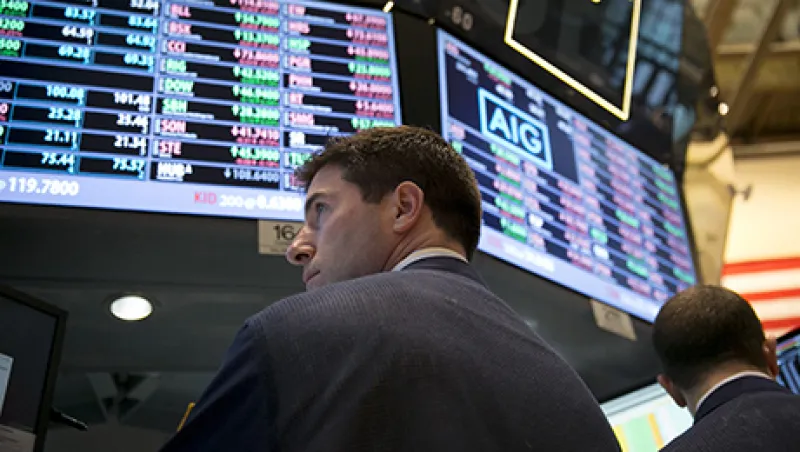It’s often hard to resist the temptation of an inexpensive, passive equity allocation. But we at AllianceBernstein think you can find plenty of good reasons to go active just by looking around the markets.
Passive investing does have its appeal; it offers lower fees and simplicity. And many investors are skeptical about the ability of active managers to beat a benchmark consistently. Often, a passive portfolio can be a good complementary component to an active allocation, especially in large-cap, developed markets.
Yet there’s also a lot of evidence supporting active asset management. Hugging a benchmark has its risks. Going passive means there are many opportunities that can slip by. Not every point on the following list is relevant to every investor in every market, mind you. But generally speaking, we can think of ten good reasons to stay active in equities today.
1. To steer clear of expensive sectors. When a stock or sector becomes pricey, a benchmark will still hold it. Even after the decline in high-momentum stocks this year, many Internet and biotech names still aren’t cheap. An active manager can think twice about owning a stock trading at an exponential multiple to its future earnings — or decide to focus on specific companies for which the disruption potential appears to justify the valuation. This applies to sectors, too. U.S. utilities trade at about 16.3 times trailing earnings, slightly below the S&P 500. But that’s a high price to pay for a sector that has delivered earnings growth of 0.3 percent a year during the past five years, well below the broader market’s growth of 9.5 percent. Yet by buying the S&P 500, you would automatically be stuck with about 6 percent of your portfolio in utilities.
2. To manage a rising rate environment. What will happen when interest rates rise from their present historical lows? Stocks in some income-oriented industries like tobacco and telecoms tend to have a negative sensitivity to rising rates. On the other hand, many stocks that are more cyclically exposed could do well as rising rates signal a healing economy. Active managers can fine-tune their exposures accordingly.
3. To navigate political risk. There’s no such thing as an exchange-traded fund that can prepare for — or react to — political tension, whether in the Middle East, Ukraine or Washington. Similarly, in many emerging markets, government meddling in companies and industries poses its own set of challenges. An active investor can make a measured assessment of when political involvement isn’t worth the risk.
4. To deal with disintermediation. Many industries face disruption because of technological change. Remember Blockbuster video stores and Kodak? Countless large, benchmark companies are facing similar threats. Benchmarks aren’t very good at keeping a distance from tomorrow’s Blockbuster.
5. To avoid bubbles. This is perhaps the classic passive flaw. In 1980 the U.S. energy sector ballooned to 27 percent of the S&P 500. In 1999 the technology sector accounted for 29 percent of the index. Both sectors collapsed in the subsequent two years. Japanese stocks reached 44 percent of the MSCI World index in 1988 — more than five times higher than their present proportion and, at the time, a bigger weight than to U.S. stocks. Active investors should always be on the lookout for the next market bubble. You never know where one might pop up. For example, real estate investment trusts now make up almost 9 percent of the U.S. small-cap index, which is toward the high end of its ten-year history.
6. To capture technological innovation. By design, benchmarks look to past performance, so they might not include cutting-edge companies that will post rapid growth spurred by new technologies.
7. To adjust to economic recovery. In a global portfolio, a selective tilt that takes a country’s economic cycles into account can help zero in on companies best positioned to benefit from regional variations of recovery. And in a single-country or regional portfolio, an active manager can shift toward companies that appear to be in the right place at the right time of an economic rebound.
8. To find higher revenue growth. In an era in which it’s becoming harder to expand profit margins, companies that can increase revenue may have an advantage. An index isn’t really able to point your portfolio toward high-revenue generators that have a better chance of posting earnings in a tough environment.
9. To benefit beyond the benchmark. There’s always something exciting going on just outside the benchmark. When emerging markets underperformed in a recent quarter, frontier markets held up much better. What about surging M&A activity in the pharmaceutical industry? An active U.S. portfolio might find a way to buy a U.K. or Swiss drugmaker that isn’t in its benchmark but could benefit from the trend.
10. To exploit less intensively researched universes. Small- and mid-cap stocks are fertile ground for active managers, because the represented companies tend to get much less coverage by analysts. We’ve built what we call a mindshare index that measures the intensity of research based on the frequency that analysts publish and adjust estimates. Using this model, we found that large-cap companies get more than three times the attention of small-cap companies. The same concept can be applied to emerging markets. The return and diversification potential from companies in frontier markets can’t be obtained in a typical emerging-markets benchmark. And frontier market indexes are even more prone to the vulnerabilities of benchmarks in general, as they tend to be heavily weighted toward a few countries.
Sharon Fay is head and CIO of equities at AllianceBernstein in New York.
See AllianceBernstein’s disclaimer.
Get more on equities.






